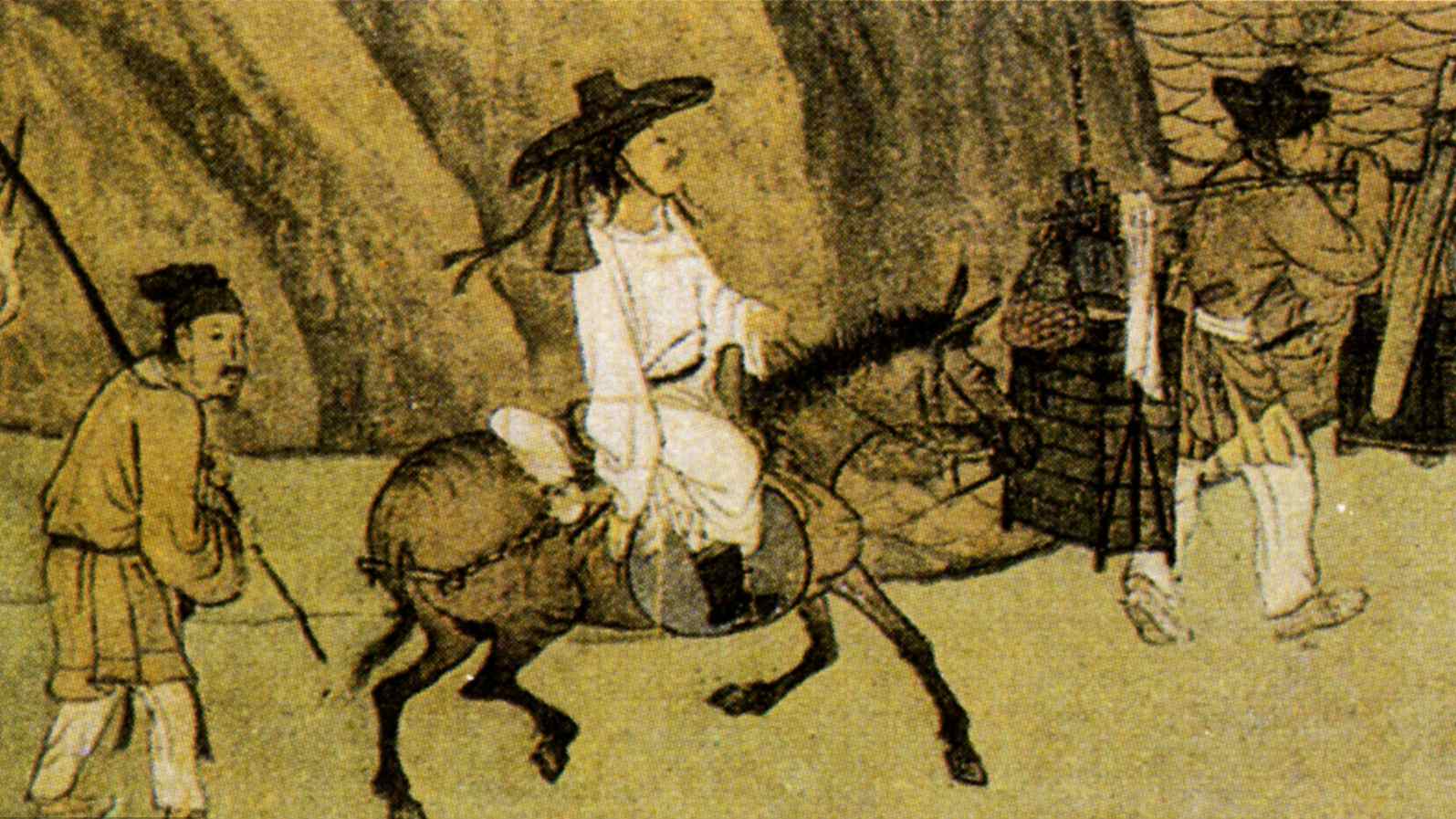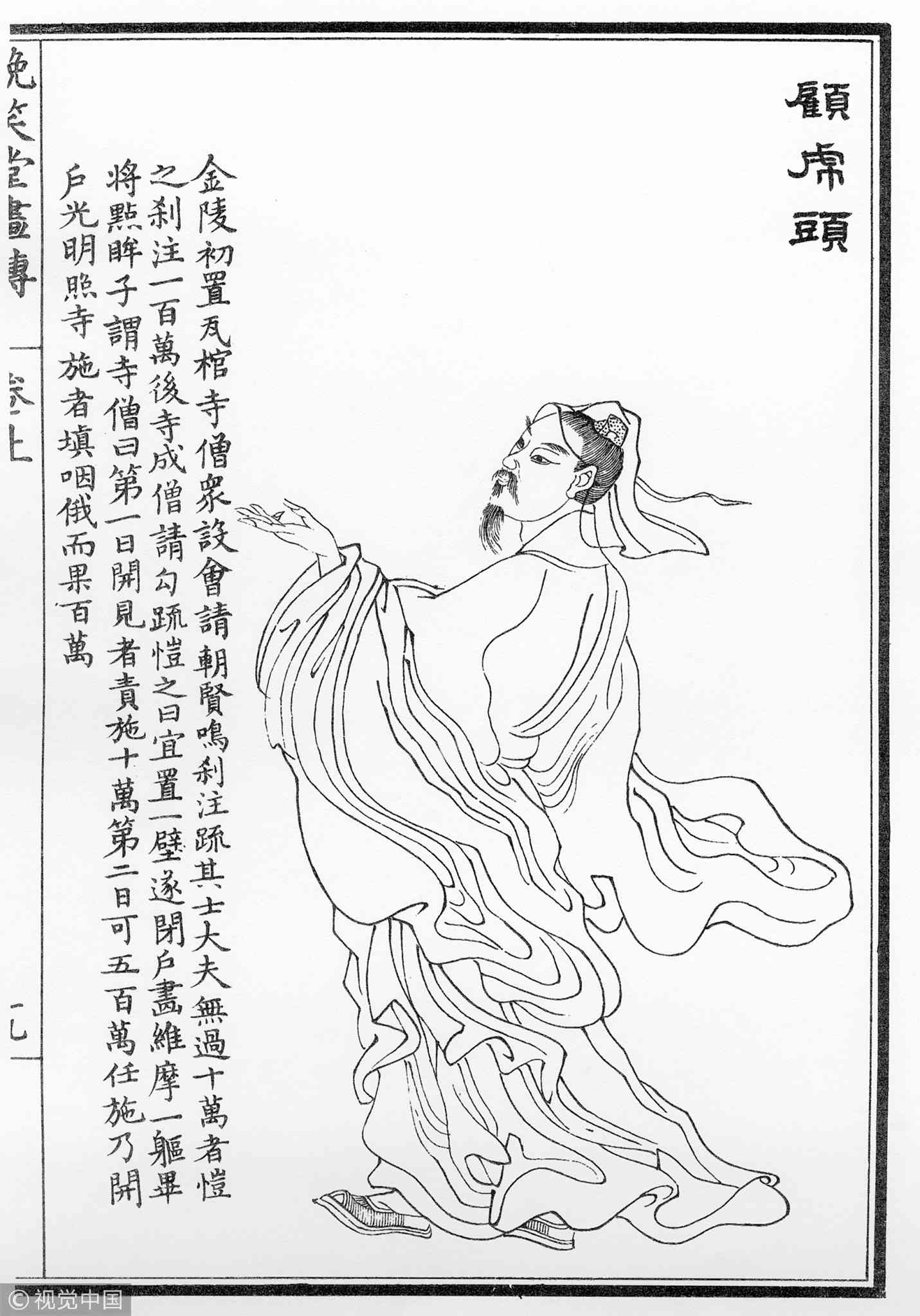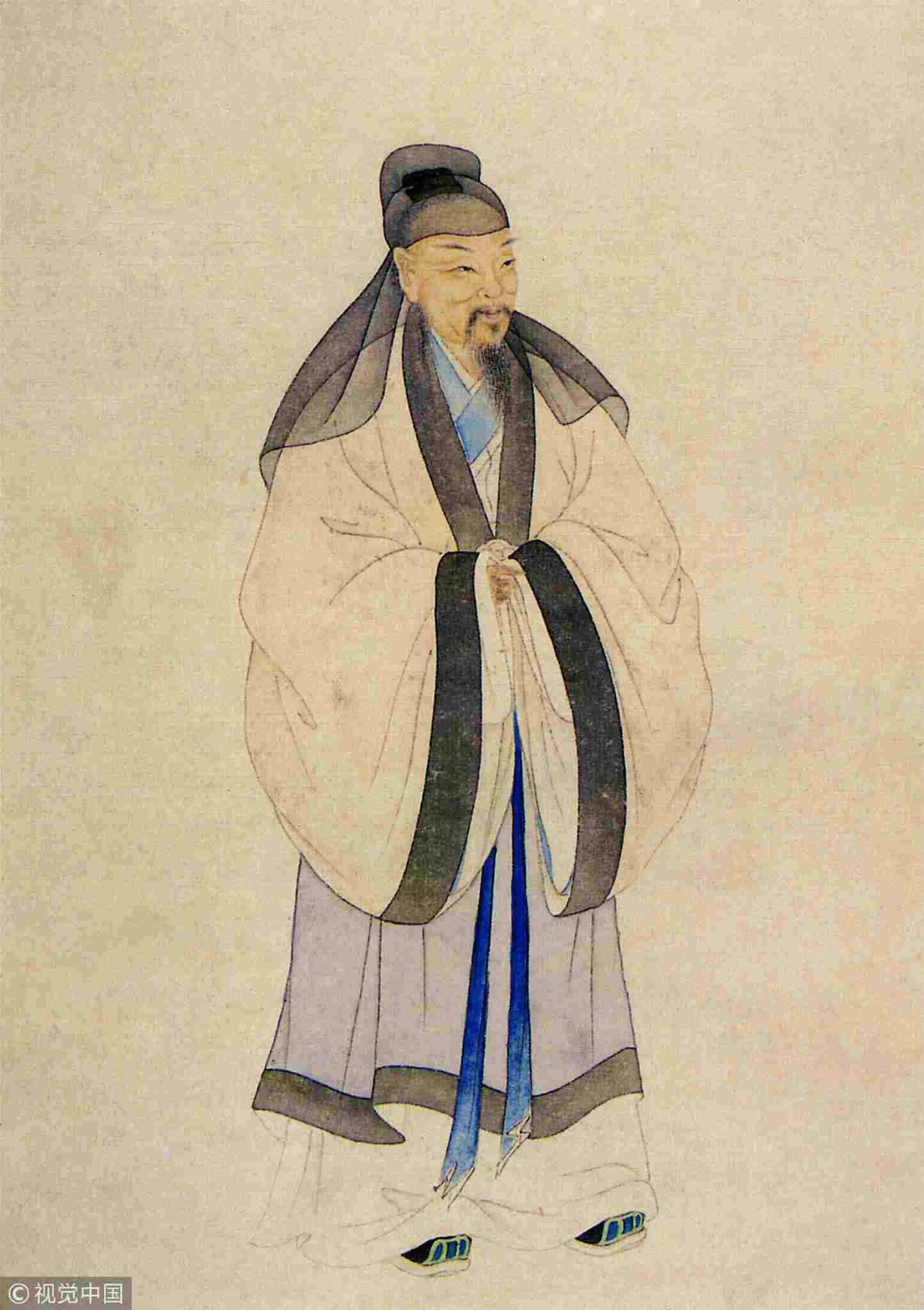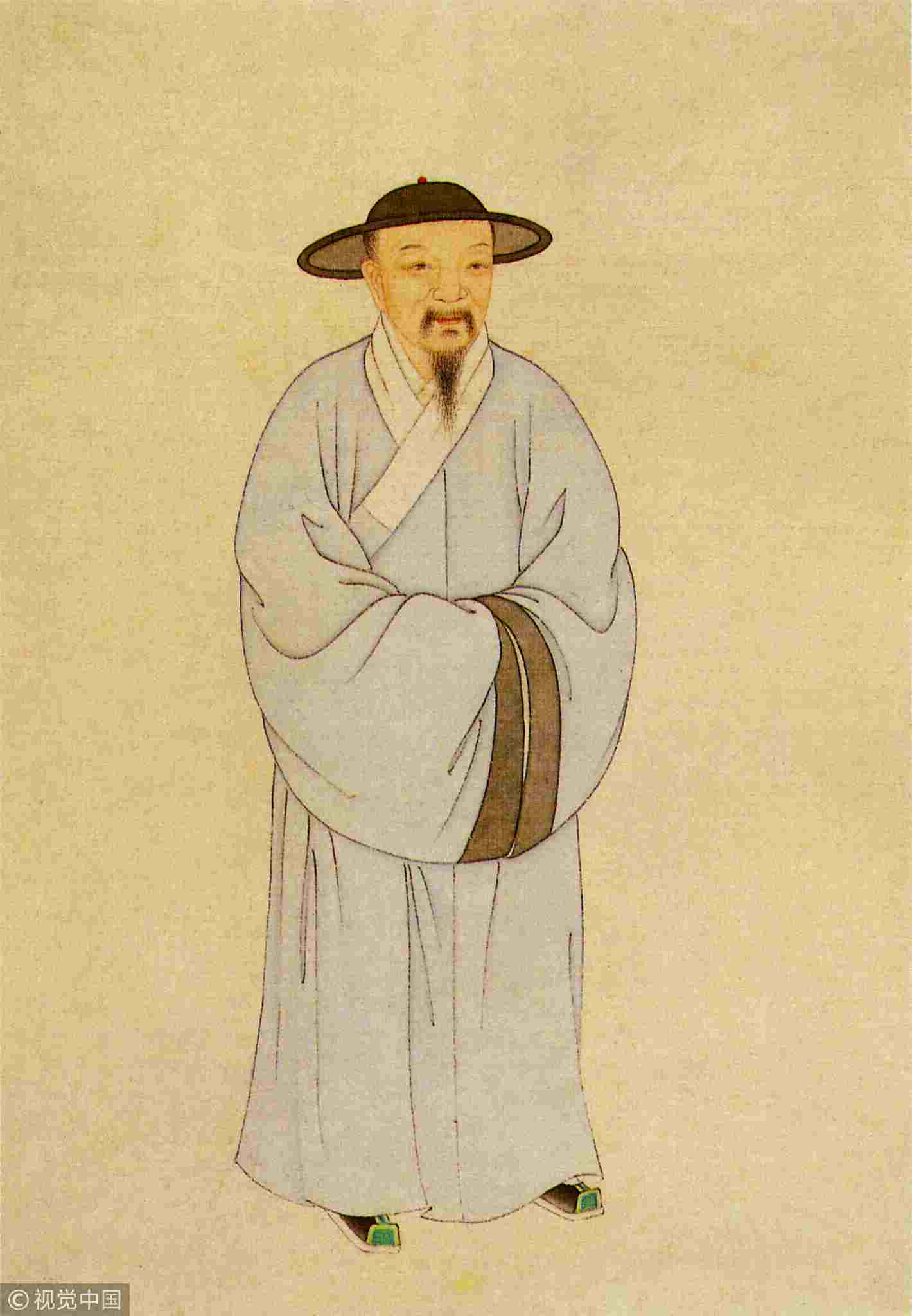Chinese painting has had a long history, producing many extraordinary painters in the preceding dynasties. Through the passing down of their works, people continue to enjoy their distinct styles and famous theories of art.
Here is a list of five outstanding painters in ancient China, with each representing a different era.
Gu Kaizhi (348 - 405AD)
The Southern and Northern Dynasties (220 - 589AD) were very important historical periods in the history of Chinese painting. Gu Kaizhi, a painter living in the Eastern Jin Dynasty (317 - 410AD), was a figure that could not be ignored.
Gu was not only a painter but also a painting theorist and a poet. Though good at poetry and calligraphy, he was best at painting, especially figures and landscapes.
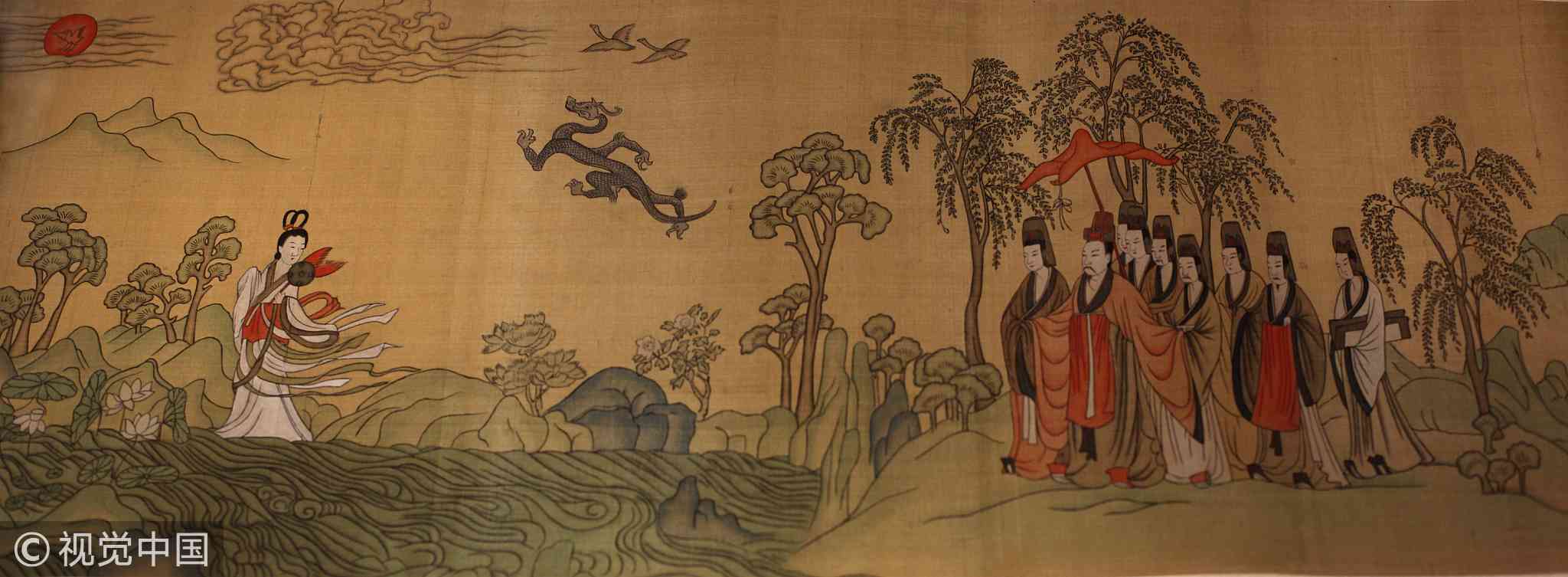
The picture shows part of Gu's work on figures and landscapes /VCG Photo
The picture shows part of Gu's work on figures and landscapes /VCG Photo
Gu created not only the basic model for figure painting, leaving the earliest landscape manuscript "Painting Yuntai Mountain," but also attached importance to the observation of experience, and advocated for the expression of the spiritual state of the characters in his art.

Another part of Gu's work on figures and landscapes /VCG Photo
Another part of Gu's work on figures and landscapes /VCG Photo
Wu Daozi (680 - 759AD)
Wu Daozi, a famous painter in the Tang Dynasty (618 - 907AD), was honored as a painting saint. Wu lost his father at an early age and lived in poverty.

Portrait of Wu Daozi /VCG Photo
Portrait of Wu Daozi /VCG Photo
He first learned calligraphy from Zhang Xu and He Zhizhang, both great calligraphers in ancient China. Wu eventually specialized in painting after not garnering much acclaim for his calligraphy. He made rapid progress as a result of his hard work and determination.
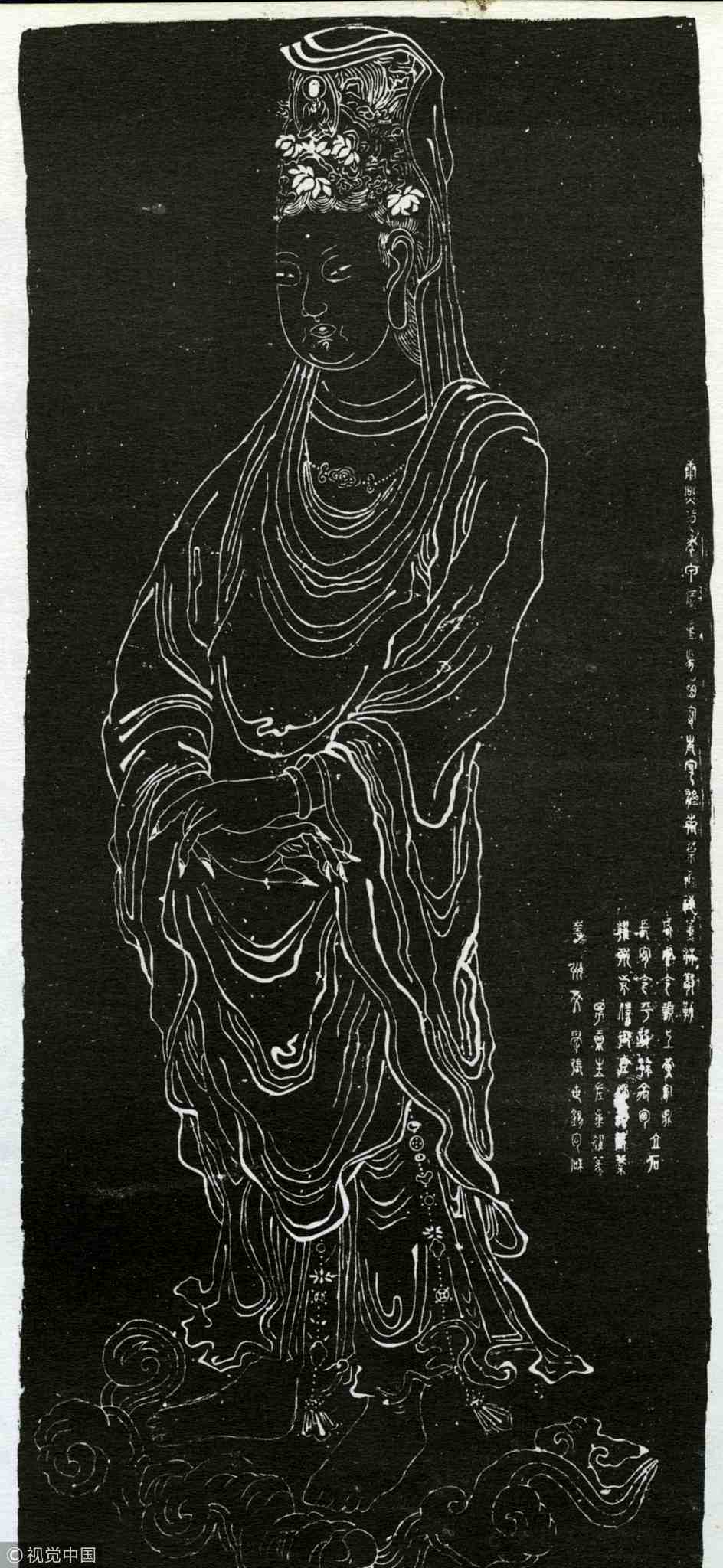
'Buddhist Goddess of Mercy' by Wu Daozi /VCG Photo
'Buddhist Goddess of Mercy' by Wu Daozi /VCG Photo
Wu's murals were considered "one character with eight characters." He painted figures with round strokes so as to show their flowing clothes. As a result, his style was praised as "Wu Dai Dang Feng," which means "excellent painting skills and elegant painting style".
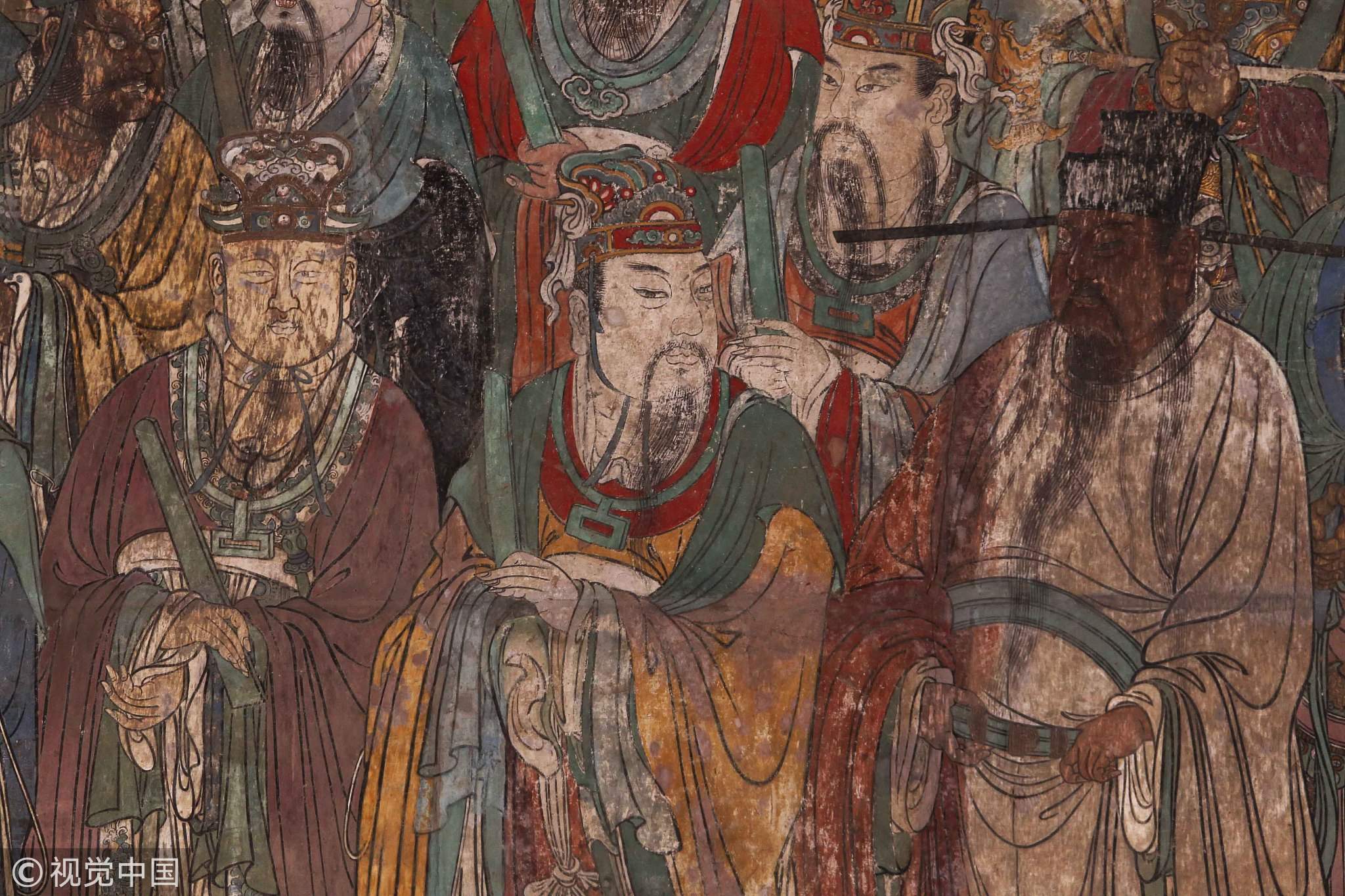
Murals of Yongle Palace in the Yuan Dynasty (1271 - 1368AD). /VCG Photo
Murals of Yongle Palace in the Yuan Dynasty (1271 - 1368AD). /VCG Photo
Many of Wu's inventions were bright spots in the history of Chinese painting, such as the liberation of realistic techniques, the formal establishment of brushwork, and landscape painting.
Wu's style deeply influenced painters of later ages. For example, his impact can be recognized in the murals in Dunhuang in the Tang dynasty and Yongle Palace in the Yuan Dynasty (1271 - 1368AD).

Murals of Yongle Palace in the Yuan Dynasty (1271 - 1368AD). /VCG Photo
Murals of Yongle Palace in the Yuan Dynasty (1271 - 1368AD). /VCG Photo
Ni Zan (1301 - 1374AD)
Ni Zan was a painter and poet in the Yuan Dynasty and early Ming Dynasty (1368 - 1644AD). Although Ni came from a prosperous family, he did not succumb to complacency, and studied diligently.
Ni specialized in landscapes and ink bamboos. Though he was neither a recluse nor an official, he preferred to be out of the spotlight.

This work shows the landscape after heavy rain. /VCG Photo
This work shows the landscape after heavy rain. /VCG Photo
People in the Ming Dynasty were proud to collect Ni Zan's paintings. His practical and theoretical viewpoints on painting greatly influenced art in the Ming and Qing (1644 - 1912AD) dynasties for hundreds of years.
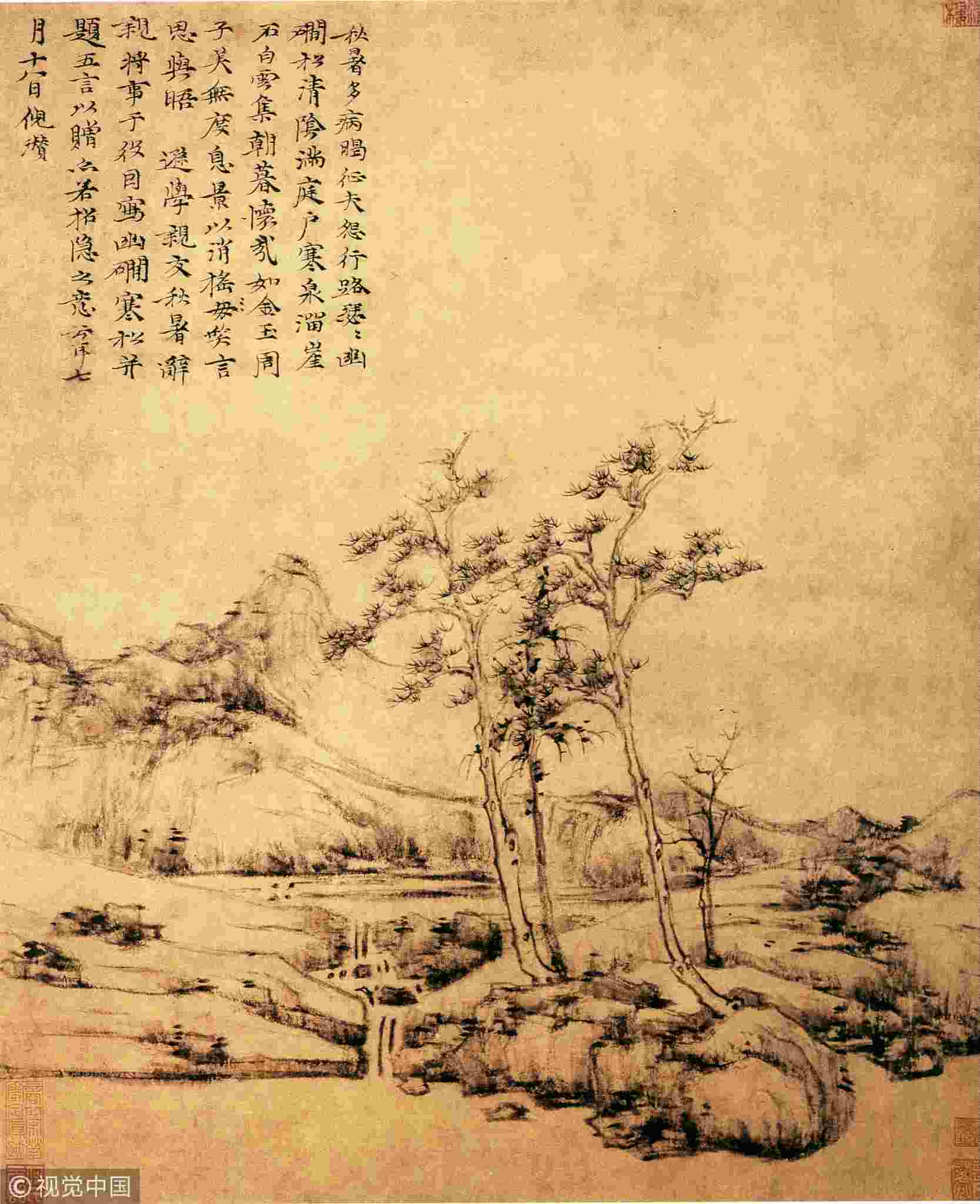
Ni's work on pine trees /VCG Photo
Ni's work on pine trees /VCG Photo
Dong Qichang (1555 - 1636AD), Shi Tao (1642 - 1708AD) and other great masters were all influenced by him. Dong Qichang's calligraphy and paintings, from style to form, were all based on his methods.
Zhu Da (1626 – about 1705AD)
Zhu Da, also known as "Ba Da Shan Ren" in Chinese, was a painter in the late Ming Dynasty and Qing Dynasty. He was the descendant of Zhu Yuanzhang, the founder of the Ming Dynasty.
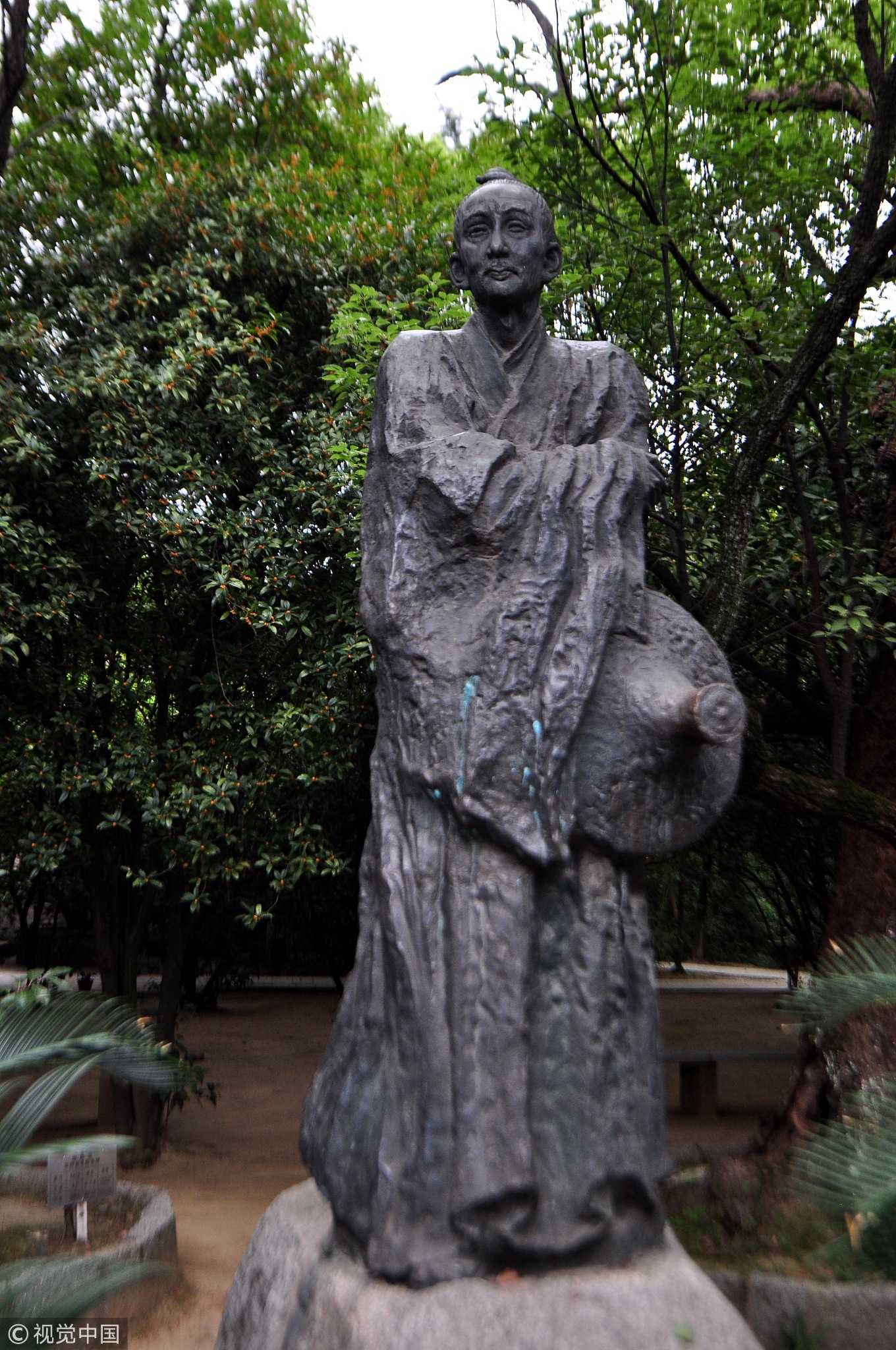
The statue of Zhu Da /VCG Photo
The statue of Zhu Da /VCG Photo
In 1644, the Ming Dynasty collapsed, and both Zhu's father and wife died within ten years. He eventually became a monk, living out his days in a temple with his brother. He remained loyal to the Ming Dynasty for the rest of his life and refused to cooperate with those from the Qing Dynasty.
His works are filled with symbolism, where picturesque fish, ducks, and birds all embodied the spirit of toughness while gazing arrogantly at the Qing Dynasty.
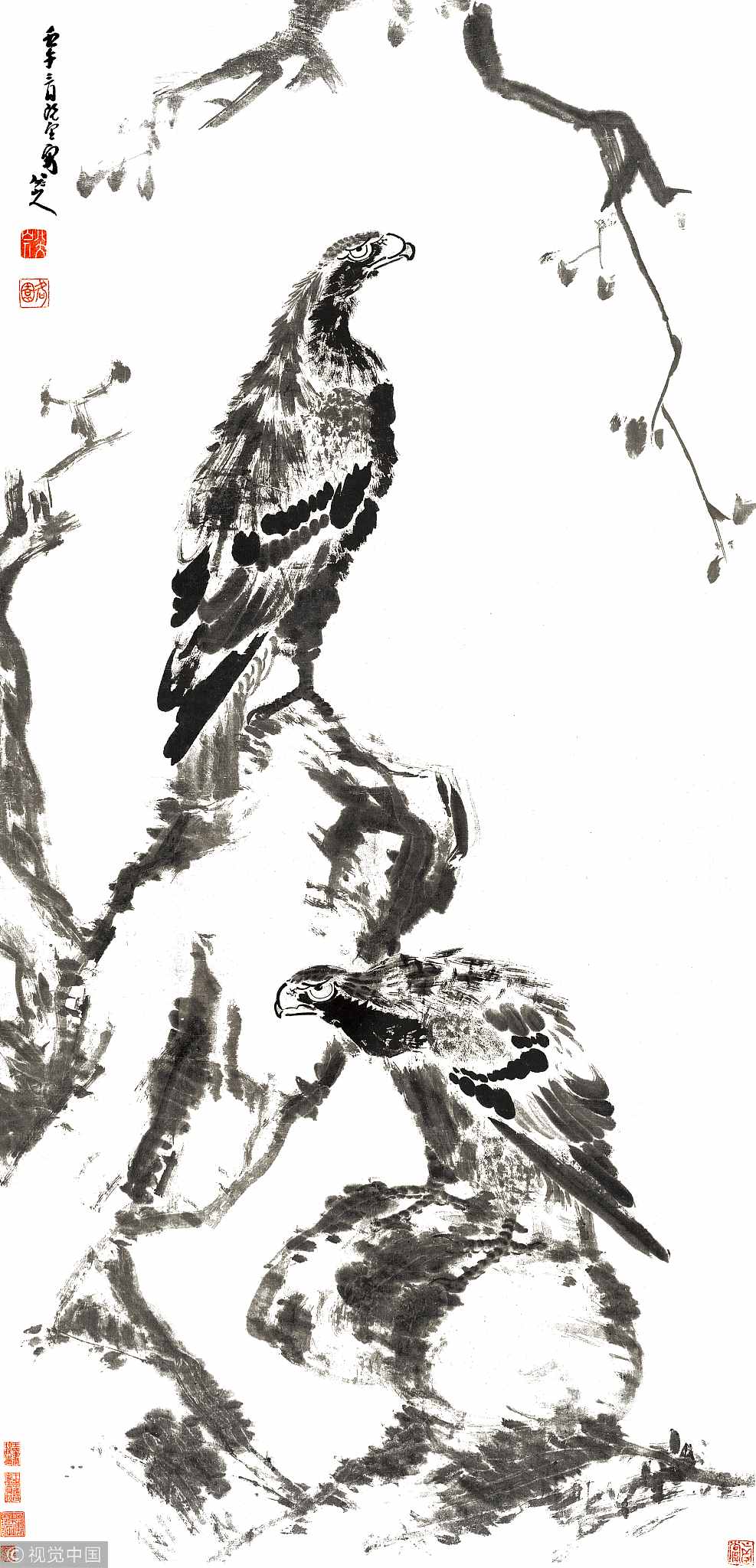
'Eagles in A Pine Tree' by Zhu Da /VCG Photo
'Eagles in A Pine Tree' by Zhu Da /VCG Photo
Though Zhu's paintings were simple, they greatly influenced later generations, instilling in viewers a sense of spontaneity instead of just passive observation.
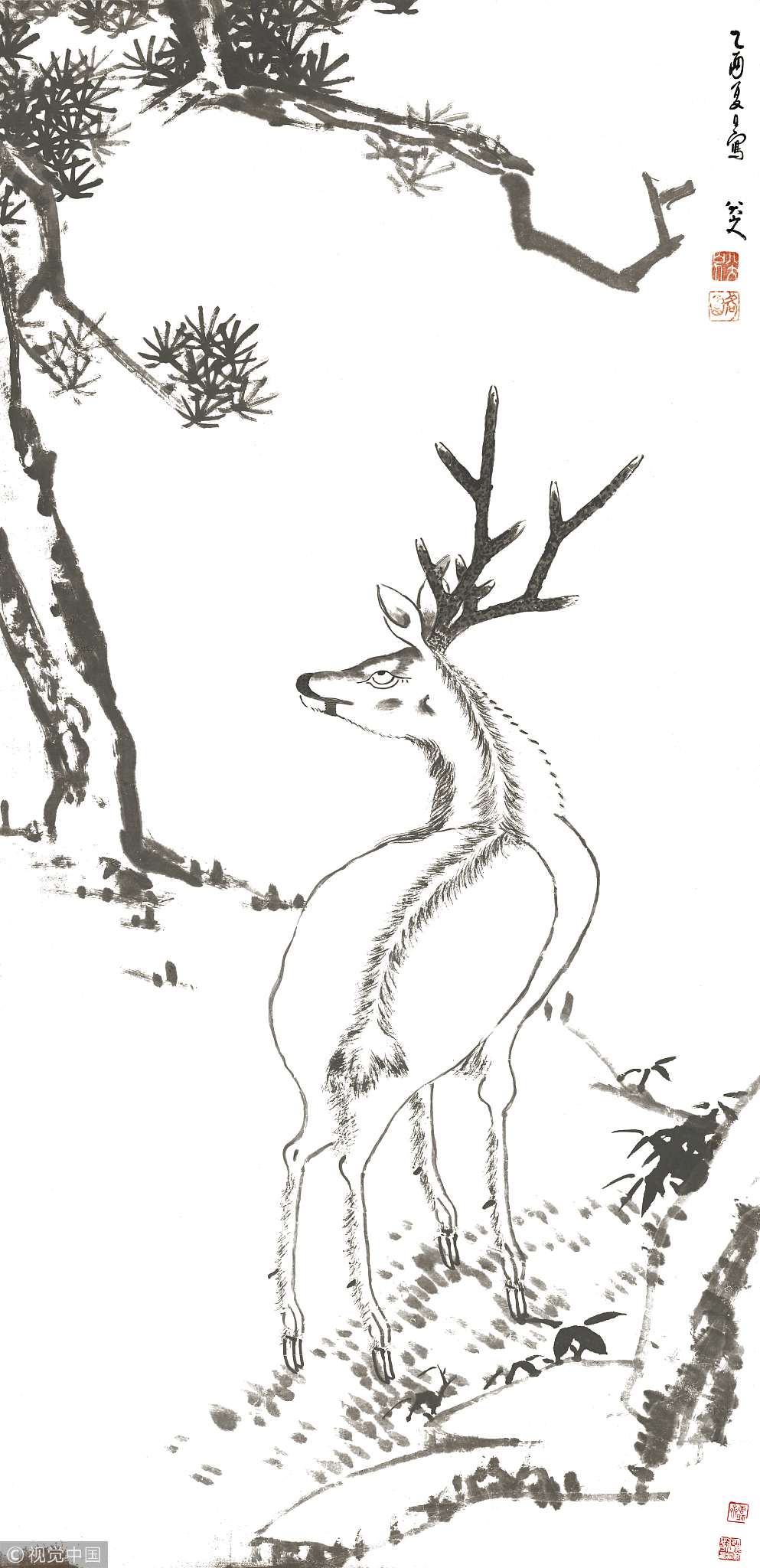
Zhu Da's work, 'A Deer under A Pine Tree' /VCG Photo
Zhu Da's work, 'A Deer under A Pine Tree' /VCG Photo
Zhao Mengfu (1254 - 1322AD)
Zhao Menfu was the descendant of Zhao Kuangyin, the founder of Song Dynasty (960 - 1279AD). He was a versatile scholar specializing in calligraphy and painting.
Zhao had an impressive memory even as a child, not forgetting anything he had read or written. When he was fourteen, he joined the army until the Southern Song Dynasty was toppled in 1279AD.

Zhao Mengfu's masterpiece, 'A Monk in Red' finished in 1304AD. /VCG Photo
Zhao Mengfu's masterpiece, 'A Monk in Red' finished in 1304AD. /VCG Photo
Zhao's most important contribution to Chinese paintings was to make them elegant and reserved. His influence was so great that after him, "reserve" culture in southern China gradually became the mainstream for Chinese painters.

